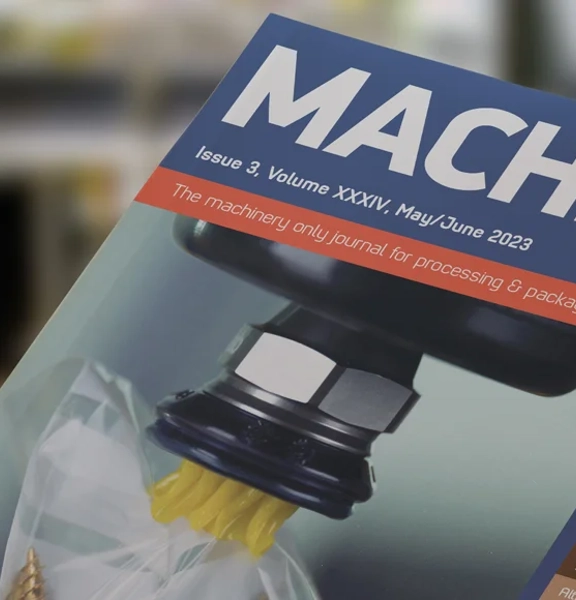Become a member
Take advantage of exclusive member benefits, world class events, networking and specialist support








 Become a member
Become a member 

4 March 2025
The growing adoption of robotics continues in the ongoing transition to smart manufacturing. This is clear in the UK, with the data revealing a significant rise in robot installations and use across various sectors. Installations increased by 51% from 2022 to 2023, with 3,830 new units introduced to UK factories. While this can be attributed partly to the UK Government’s ‘super-deduction tax break’, it’s expected to be an ongoing trend - with more manufacturers realising the ability to improve productivity, efficiency, and safety with robotics. We’ll highlight the fast-developing partnership between humans and robots here.
As mentioned, robotics have increasingly been adopted for the transformation of manufacturing processes. This is particularly true of the automotive industry, which accounted for 50% of the robotic market share in 2023. However, the number of robot installations has also increased across food and beverages, electronics, metals, and other key sectors. This looks set to continue, with an annual growth rate of 4.43% forecast through 2029. 63% of manufacturers have set their intention to invest in robotics over the next couple of years.
There are numerous reasons for the increasing adoption of robots in factories. In the UK this trend is being driven by the need to meet high production demands at the same time as ensuring consistent quality. From material handling to assembly, robots are being designed for a growing range of applications. They can complete tasks with much greater speed and accuracy than human workers.
With that said, it has become increasingly common to see robots working alongside people in factories. There’s a reliance on such collaborative robots (cobots) to perform tasks that require high levels of precision and adaptability. As an example, the January/February 2025 edition of Machinery Update focused on Cama’s integration of multiple robots for the packing of coffee pods in varied case sizes for a US brand (page 20). The addition of 9 x delta and 2 x 2-axis robots has significantly increased production line speed and accuracy.
A growing number of businesses are realising the need for automation to remain competitive in an increasingly digitally-focused world. However, various ethical factors must be considered in committing to investment in robotics. As highlighted in Automate UK’s Manifesto for Automation, there’s a clear need to bust the ‘robots take jobs’ myth. The adoption of robots should instead be seen as the logical next step in workforce evolution. Solving problems such as limited access to low-cost labour, robots can be depended on for the completion of manufacturing tasks in the dull, dangerous, and dirty categories. They can give human workers more freedom to focus on tasks that call for high-level analysis and creativity.
Increased automation also calls for the development of skills in robotics, maintenance, and programming. This will give workers the chance to take on new and expanded roles, making for greater engagement, adaptability, and productivity. There will be opportunities for robotics engineers, robotics officers, and data scientists in the factories of the future.
Manufacturing decision-makers must see safety and trust as key factors in the increased adoption of robotics. There should be a commitment to investing in technologies that can work reliably alongside humans with no risk of harm. Precautions must also be taken for the safeguarding of private and sensitive data collected by robotic systems.
As long as the ethical concerns are addressed, there’s every reason for confidence in effective collaboration between humans and robots. The development of advanced sensors and AI will continue, making for greater precision in manufacturing environments. AI will also allow for continuous improvement, with lessons learned and adjustments made for the improvement of the human-robot relationship.
The latest advancements point to a positive future for interaction between people and robots. For instance, the integration of natural language processing is enabling robots to understand and act on voice commands in manufacturing settings. The development of real-time translation capabilities is making for improved interaction with multilingual teams. Gesture recognition technologies are also being developed, with robots responding to hand signals for the optimisation of manufacturing processes.
Manufacturers can look forward to the emergence of increasingly human-centric robot designs, with a focus on usability, adaptability, and effective interaction. Such improved collaboration will bring benefits such as faster product development, improved quality, and reduced costs. As the American Film Director, Bob Reiner, has said, “In the field of robotics, the future is limited only by our imagination.”
As the leading trade association for automation suppliers and technology end users, Automate UK is committed to realising the potential of human-robot collaboration. We will achieve this by supporting the growth of our members and helping users make the best-informed technology decisions. In so doing, we will enable the UK’s manufacturers to boost productivity and thrive across increasingly competitive markets. Together, we’ll innovate the future of automation.